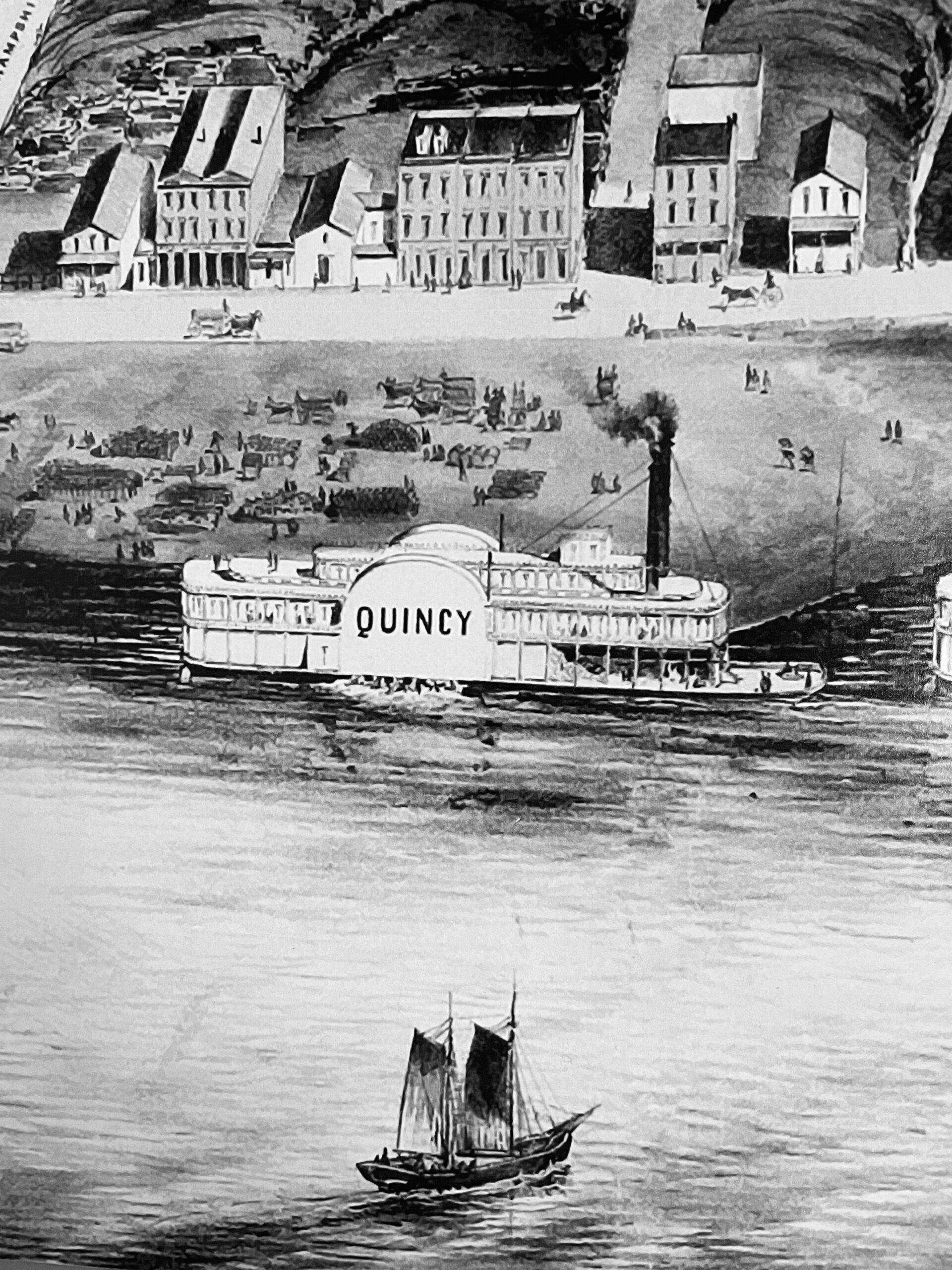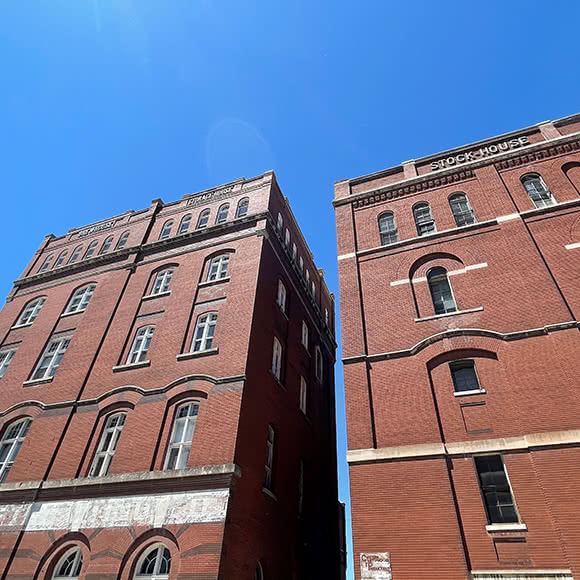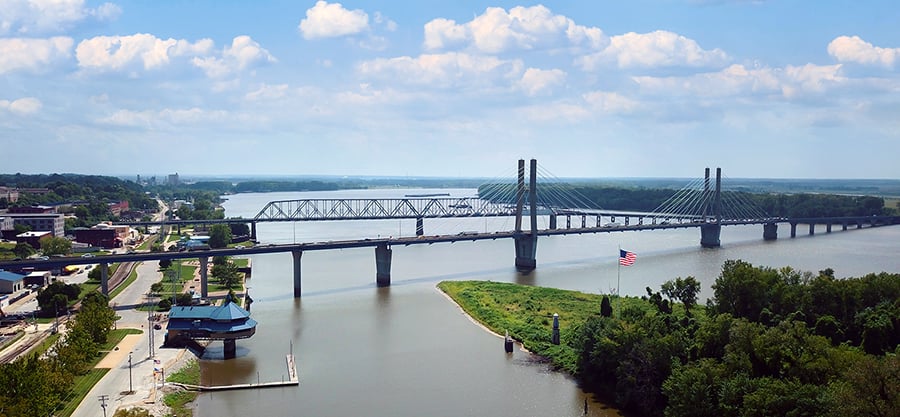Highlights
Quincy has proven since its 1825 inception, to be a “good” city. Good at industry, commerce, ingenuity and hospitality. And good at providing a welcoming, safe harbor and home to people suffering adversity.
-
Gem City
Quincy is known as Illinois’ “Gem City,” on the western border of the state where Iowa & Missouri meet. During the 19th Century, Quincy was a thriving transportation center as riverboats and rail service linked the city to many destinations west and along the river.
-
Key Link for Equality
Separated only by the river from the slave state of Missouri, Quincy was a pivotal community on the issue of slavery and equality. In the 1830s it served as a key link in the Underground Railroad, and later was often frequented by Abraham Lincoln. The 6th Lincoln-Douglas Debate was held in Quincy’s Washington Park in 1858.
-
Home of First Black Priest in the US
During the 1860s, Augustine Tolton relocated as a young boy to Quincy, later becoming the first black priest in the United States.
-
Great River Road
Quincy was once Illinois’ second-largest city, surpassing Peoria in 1870. Today, it remains a prominent river city, and is an integral part of the Great River Road, America’s historic north-south transcontinental byway since 1938.
-
Historic Districts
A mighty duo exists in our fair city: preservation and progression. Hence, there are 3,600+ buildings contributing to Four National Historic Register Historic Districts, 28 parks, 18 Lincoln Storyboards, 12 museums, 70 locally owned eateries, and 7 wineries.
-
Growth & Restoration
Continued growth and restoration of the 1857 Brewery District in Quincy, now offers artists, visitors and residents a fine arts gallery, brewery building tours and a revitalized annual Oktoberfest.
-
Gateway Community
In addition to the Lincoln Storyboards dotting the downtown area, Quincy has now been named one of six Gateway Communities in the State of Illinois.
-
quincy national cemetery: 36th & Maine
Read MoreThe Quincy National Cemetery originated as a Civil War-era soldiers' lot within the Woodland Cemetery in Quincy, IL. In 1936, the 0.45 acre soldiers' lot at 36th & Maine was officially designated as Quincy National Cemetery and has remained a national cemetery since that time. The cemetery was listed on the National Register of Historic Places on May 7, 2011.
– Abraham Lincoln

Expanded History of Quincy
In 1819, John Wood of Moravia, NY bought 160 acres of military tract land for $60, and would later found Quincy, which at the time was coined Bluffs. In 1825, it was renamed Quincy and became the seat of government for Adams County, both named after newly elected President John Quincy Adams. The city would incorporate as a city nearly two decades later, in 1840.
In 1838, many members of the Church of Jesus Christ of Latter-day Saints fled persecution in Missouri and found shelter in Quincy. Despite being vastly outnumbered by Mormon refugees, residents provided food and lodging for the displaced people. Joseph Smith then led his followers 40 miles upstream to Nauvoo, Illinois in hopes of finding a permanent home. Also in 1838, Quincy sheltered the Potawatomie tribe as they were forcibly relocated from Indiana to Kansas.
The 1850s and 1860s brought increased prosperity to Quincy, as steamboats and railroads linked Quincy to places west, often the destination of migrants. The founding of the Chicago, Burlington, and Quincy Railroad in 1855 and the construction of a rail bridge in Quincy was a major drive for creating a transportation hub in the region and furthered commerce. It is during this time that the population of the city grew enormously, from a little under 7,000 in 1850 to 24,000 by 1870, helping Quincy surpass Peoria in becoming the second-largest city in the state (at that time).
In 1858, three brothers founded one of the largest breweries in the United States in Quincy’s 9th & York area. In the early part of the 20th century, Dick Bros brewery was larger than Anheuser-Busch in St. Louis, Missouri. When the Dick brothers built their original brewery, it had an annual capacity of about 1,500 barrels of lager beer; within the next 15 years, it would produce about 70,000 barrels. Prohibition and finally the effects of WWII caused the brewery to be auctioned off under bankruptcy in 1951.
In 1860, Quincy founder and Lieutenant Governor John Wood inherited the governorship of Illinois. At the time, he was overseeing business interests and the construction of his mansion. The Illinois legislature allowed him to stay in Quincy during his tenure, effectively making Quincy a “second” capitol for the state. His absence from the official Governor’s office in Springfield provided Abraham Lincoln a space for planning his Presidential run.
The matter of slavery was a major religious and social issue in Quincy’s early years. The Illinois city’s location, separated only by the Mississippi River from the slave state of Missouri, which was a hotbed of political controversy on the issue, made Quincy itself a hotbed of political controversy on slavery. Dr. Richard Eells, who was a staunch abolitionist, built his home in Quincy in 1835 and sheltered runaway slaves on their way to Chicago. His home became a major stop on the Underground Railroad. The divide over slavery climaxed in 1858 when Quincy hosted the sixth Senatorial debate by U.S. Senator Stephen Douglas and his challenger, Abraham Lincoln. With an estimated crowd of 12,000 in attendance, Quincy was the largest community in which Lincoln and Douglas debated.


The Civil War brought many changes and following the Reconstruction Era, Quincy was selected as the location for Illinois’ first Veteran’s Home in 1886.
Throughout the 19th Century, Quincy had grown from a backwater hamlet along the Mississippi River to become one of the state’s most important cities and ports. It was during the early decades of the 20th Century that many of the city’s historic buildings in the Downtown Quincy Historic District were constructed, including the city’s first skyscraper, the Western Catholic Union Building, in 1925.
In 1930, the Memorial Bridge, a two-lane truss toll bridge, was opened connecting Quincy to Missouri. In 1987, the cable-stayed Bayview Bridge was constructed to help alleviate traffic on the aging Memorial Bridge. Today, both bridges complement each other by carrying westbound (Bayview) and eastbound (Memorial) traffic.


